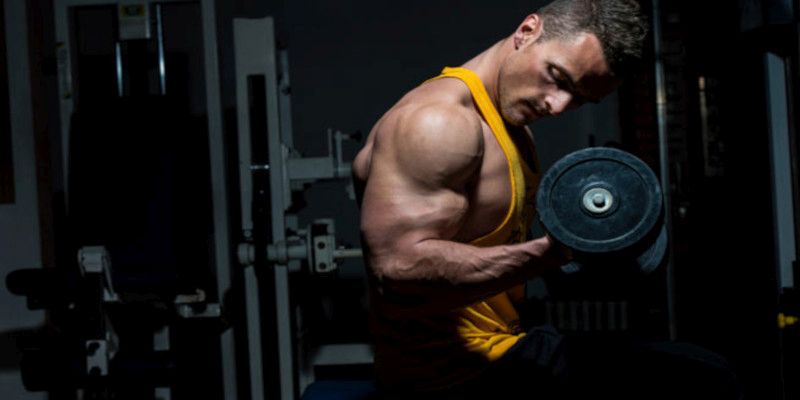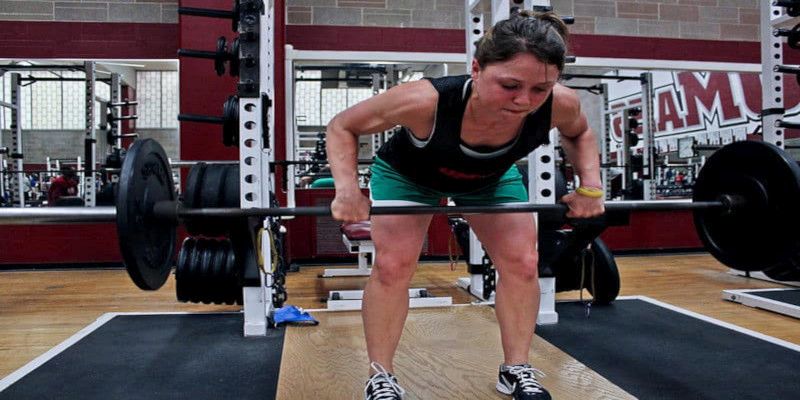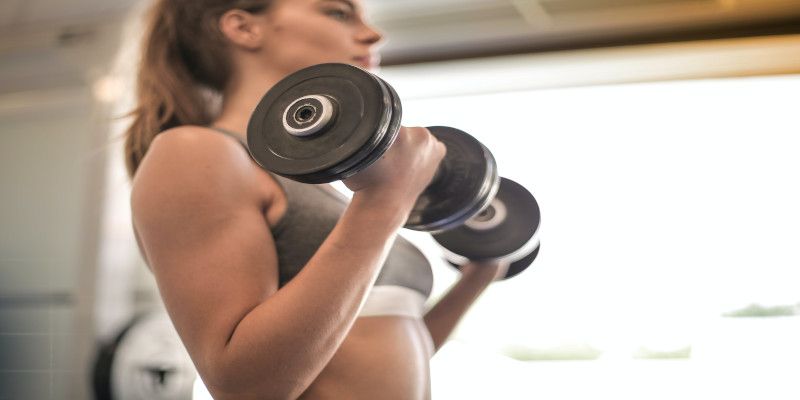Table of Contents
ToggleWhether your goal is toning or increasing your arm size, the exercises remain mostly the same. The only thing that typically changes is the number of repetitions you perform. It is generally beneficial to execute a higher repetition program for toning, while a medium number of reps is better for gaining muscle mass.
Today, we’ll be talking about how to get bigger arms, which involves knowing how to get larger biceps and triceps since they make up the upper arm.
Upper arm muscles anatomy

The upper arm is made up of 3 muscles in the anterior segment, also called the front. Namely:
- Biceps brachii
- Brachialis
- Coracobrachialis
The function of these three muscles is flexion of the elbow. Or, in more plain language, bending of the elbow joint.
In the posterior segment, also called the backside, we have the sole muscle called:
- Triceps brachii
The function of the Triceps muscle is an extension of the elbow, which translates to extending the elbow joint.
Which muscles make our arms look big?

Before we can make our muscles grow, we need to know which muscles are anatomically the largest so we can train the right muscle groups effectively.
The Triceps and the Biceps are anatomically the two biggest upper arm muscles, with the triceps being the largest. Thus, it makes sense to train the Triceps the most since most gains can be made here.
TRICEPS BRACHII
The Triceps brachii makes up for about 2/3 of the upper arm’s volume.
This logically means that contrary to popular belief, it’s more beneficial to train the Triceps muscle rather than the Biceps if you wish to increase the size of your arms.
BICEPS BRACHII
However, although the Triceps brachii is substantially larger, this doesn’t mean that the Biceps brachii should be neglected either. To create a strong, well-balanced look, we can’t have any muscles lagging behind.
That’s why we should also be training our Biceps and Deltoids to get bigger shoulders. What good are large arms when our shoulders remain comically small? Proportions are important indeed.
Compound vs. isolation exercises to build big arms

To build larger arms, the main routine should always mainly consist of compound exercises.
Isolation exercises should only be added as accessory work and to specifically target the muscle(s) that are lagging. Just like a dumbbell biceps curl would isolate and target just the Biceps brachii, for example.
This can be a perfectly viable exercise to perform as accessory work or to rehabilitate an injury or weak spot.
Compound exercises such as bench presses and dumbbell shoulder presses to target the Triceps muscles in addition to barbell rows and pull-downs to target the Biceps brachii should make up the bulk of the workout program. Of course, other essential movements such as deadlifts and squats should be included as well.
The reason we want the bulk of our workout to be compound movements instead of isolation exercises is that we can move a lot of weight with compound movements. Much more so than singling out muscle groups.
Isolation exercises such as triceps extensions to fatigue the triceps muscle and dumbbell biceps curls to practice the biceps should be added to target one muscle specifically to train them to exhaustion after performing our compound movements.
Training to failure will increase protein synthesis, which will lead to building bigger arms and hypertrophy in general. Of course, don’t always train to failure since you want to prevent injuries and central nervous system fatigue.
Workouts for bigger triceps
Bench press

- Lie down on a flat bench. Use a medium-width grip. This means positioning your hands on the bar so that your elbows are bent at about 90° in the middle of the movement.
- Lift the barbell from the bench rack and lock your elbows. This is what we call the starting position.
- Breathe in and slowly lower the bar to your chest in a controlled manner. The bar should touch around the middle part of your chest.
- Breathe out while pushing the bar back upward toward the starting position. Lock your elbows again.
- Repeat for as many repetitions as necessary. When you are done, lock your elbows and place the barbell back in the bench rack.
→ The concentric part of the bench (pushing the barbell upwards) should be done around two times as fast as the eccentric phase, which is lowering the barbell to your chest.
→ Make sure not to bounce the barbell off your chest. This means you are cheating the movement and is most likely a symptom of using weights that are too heavy for you.
Dumbbell shoulder press

- Stand up or sit down on a bench. Keep your back straight.
- Take a dumbbell in each hand and lay it down on your upper legs.
- Raise both dumbbells until they are in front of your shoulders. Your palms should be facing forward, away from your body.
- Push both dumbbells upwards in a straight line by extending your elbows.
- Lower both dumbbells in a controlled manner until they are back in the starting position. (In front of the shoulders.)
- Repeat for as many reps as needed.
Workouts for bigger biceps
Barbell row

- Stand with both of your feet at shoulder width.
- Place both of your feet under the middle of the bar. The bar must be above your mid-feet.
- Bend over with a straight back and grab the bar with a full palm medium grip. Make sure the palms of your hands are facing towards your body.
- Unlock your knees. This means slightly bending them.
- Tense your abs to keep your back straight.
- Pull the bar upwards towards your stomach/lower chest.
- Lower the bar again in a slow, controlled manner.
Lat pull-downs

- Set up the pull-down machine and choose a weight to train with. Use a wide grip.
- Grab the barbell with an overhand grip. This means the palms of your hands are facing away from your body. Your hands should be positioned a little wider than shoulder width.
- Hold the barbell in your hands and take a seat.
- Keep your back straight and watch forward.
- Pull the barbell down towards your chest.
- Slowly let the barbell rise again.
- Repeat for as many repetitions as necessary.
Triceps isolation exercises as accessory work
Triceps extension
- Take a dumbbell in your right hand.
- Put your feet at shoulder width.
- Lift the dumbbell above your head until your elbow is fully extended. The palm of your right hand should be facing towards your body.
- Keep your upper arm close to your head and bend the elbow slowly until your forearms touch your biceps. Only your forearm should move. Your upper arm must remain stationary with your elbow always pointing straight to the ceiling.
- Return to the starting position by extending your right elbow again.
- Repeat for as many reps as necessary and proceed to do the same with the left arm.
Biceps isolation exercises as accessory work
Dumbbell biceps curl

- Stand up straight with a dumbbell in each hand.
- Keep your arms close to your body. Rotate your hands until the palm of your hands is facing forward.
- Keep your upper arms stationary next to your waist and bend your elbows until the dumbbells are at shoulder height.
- Lower the dumbbells in a controlled manner.
- Repeat for as many reps as required.
Conclusion

The bulk of a training program should always consist of compound exercises since they’re superior to isolation lifts to build a solid foundation.
Isolation exercises surely have their place in a workout regimen to address specific weak points and to work a muscle to exhaustion effectively. Isolating certain muscle groups can also be utilized to rehabilitate injuries efficiently.
Both forms of movement can be used to get bigger arms. Be it at home, in the gym, or even while traveling.
Many people make the mistake of relying solely on isolation lifts to gain muscle mass. Often reasoning that since isolation exercises target solely one muscle group, which in this case is the Biceps or Triceps, they must inherently be more effective at increasing the muscle size and strength of that particular muscle.
However this is not the case since compound movements have the distinct benefit of allowing us to move a greater amount of weight, leading to more hypertrophy and power as a result of more muscle damage, more muscle groups being trained at the same time, and an increased training intensity.
